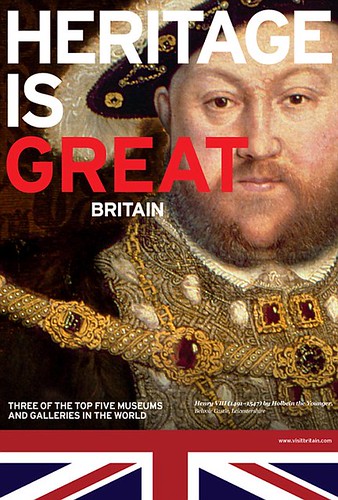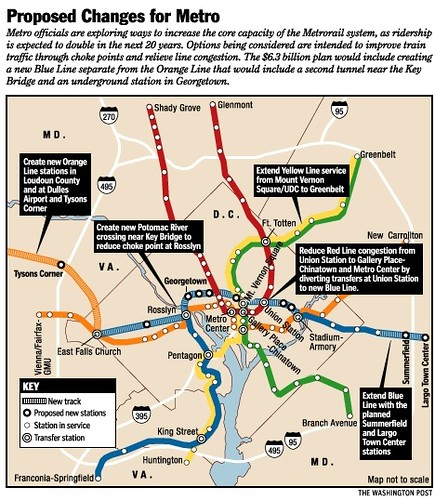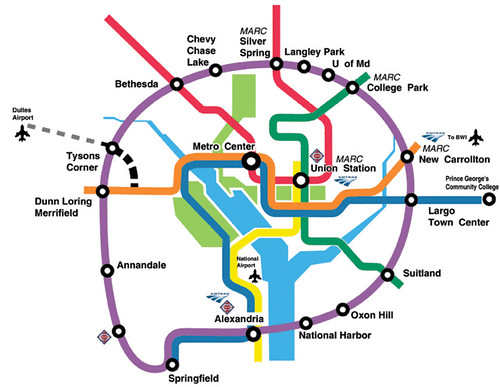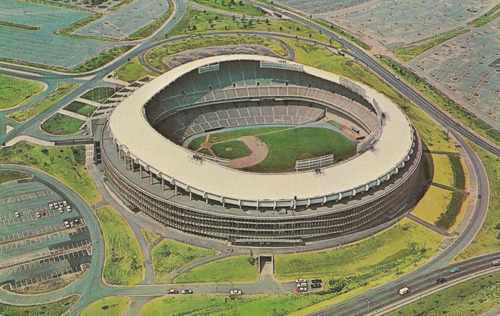Washington-Baltimore Olympics Bid for 2024
There's been talk of a renewing a bid for the Olympics for the DC-Baltimore region ("D.C. bid for 2024 Olympics? Risky but plausible" from the Washington Post) and normally I would be less inclined to be in favor of such a bid, because it's a real Growth Machine kind of initiative with limited trickle down impact ("Do the Olympics make money?," CBS News Marketwatch), not to mention how an Olympics in this region could be a great opportunity for terrorism.
True, the Winter Olympics in Vancouver sparked a massive pre-Olympics cultural planning initiative throughout British Columbia (which included the production of some great cultural planning resources through the 2010 Legacies Now Initiative). For the proposed Chicago bid, I wrote a couple blog entries about how such an event could be used to launch new significant revitalization initiatives. See "Chicago Neighborhood Revitalization and the Opportunity presented by the 2016 Olympics" and "Chicago and wayfinding systems."
Barcelona's Olympics are heralded for how they were used to shepherd various infrastructure improvements including airport expansion, subway expansion and revitalization of the waterfront.
And the London Olympics got a lot of press for a number of reasons related to revitalization and economic development:
1. Tourism is expected to be down for the period of the Olympics ("London Olympics: Report says U.K. tourism dropped during Games" Los Angeles Times)
2. Many local businesses experienced serious loss of business during the Olympics ("Olympics 'hits London retailers as shoppers stay away'," BBC and "Flight of locals, tourists leaves London too deserted" USA Today)
3. But many Olympics facilities were consciously sited as a regeneration initiative ("Urban regeneration and the London 2012 Olympics" BBC, "London's 2012 Olympics must be a 'regeneration games'" Guardian), including the development of an upscale mall ("For many, Olympics will start and end in a mall" USA Today)
4. Some transit system improvements were made in association with the Olympics.
But it will still take upwards of two decades to fully realize the benefits ("East London: Chance to revive fading pulse" and "Capital warned of two-decade legacy wait" from the Financial Times).
While tourism authorities are disappointed about the temporary loss of business, they expect that the increased visibility and promotion of UK and London during the Olympics will result in future visitation increases.

Visit Britain promotional campaign
To spark necessary local and regional transit system improvements and a revitalization of various sites along the Anacostia Riverfront specifically, I could be in favor of having the Olympics in the Washington-Baltimore region.
This isn't an exhaustive list but would be my priorities (not necessarily in this order):
1. Having the Olympics in Washington and Baltimore should be used to accelerate Amtrak Northeast Corridor improvements in Baltimore and Washington, including the upgrade of Washington's Union Station and the creation of a new railroad alignment between Philadelphia and Washington with a new Baltimore station in the vicinity of the Charles Center.

2. An Olympic bid should also be leveraged to underground the railroads in Southwest DC as proposed in the Southwest Ecodistrict Plan (NCPC) and the Maryland Avenue SW Plan (DC Office of Planning) (blog entry: "Dual powered diesel-electric locomotive introduced into service at NJ Transit and implications for long range regional railroad planning in DC, Maryland, and Virginia")
3. And if some events were to be held in Richmond, the State of Virginia could use the Olympics to spur the extension of the Northeast Corridor to a new southern terminus in Richmond.
4. Maryland and Virginia should come together and merge their now separate regional passenger railroad systems (blog entry: "Regional transportation planning and fixed rail service" and "Why don't Maryland and West Virginia think about expanding MARC into a true regional system?").
5. DC should get off the stick and build the separated blue line subway.

A separated blue line would provide a second northern crossing of the Potomac River, would serve Georgetown, would provide a parallel line downtown providing additional capacity, would provide another transit line serving Union Station, and would provide blue line service on H Street at 8th and 15th Streets, and at Benning Road adjacent to RFK. Washington Post graphic from 2002.
6. The Purple Line, presuming it's built, could be extended from New Carrollton to Largo, the eastern terminus of the blue line, to provide additional service to FedEx Field, a likely site for some Olympics events. The Purple Line could even be extended to Alexandria in a manner that would provide service to National Harbor (ugh) in Prince George's County, which by that time likely will have a casino.

Image, Sierra Club Metro DC Sustainability Campaign.
7. In Baltimore, Gerry Neilly's Charles Center intermodal transit station should be built as part of the development of a Charles Center area Amtrak Station ("THE PORTAL TO A RED LINE THAT WOULD ACTUALLY WORK EFFECTIVELY" and "THE FULLY INTEGRATED METRO/LIGHT RAIL/STREETCAR PLAN." from Baltimore Innerspace).
8. The RFK Stadium area can be rebuilt for an Olympic Stadium and Olympic Village housing athletes, using in part the underutilized and ugly parking lots. Afterwards, the Village can be converted into a mix of market rate and assisted housing. (Although I don't really believe in the reconstruction of RFK Stadium in general, or trying to get the Redskins football team to come back to DC.)

Postcard, date unknown, but before 1969 when the stadium was renamed. Note all the parking lots. Caption: D.C. Stadium located at 22nd Street, N.E. and Capitol Street Bridge. In season, the Washington Redskins and Washington Senators play home games here. Stadium features parking for 12,000 automobiles and has a seating capacity of 43,500 for baseball games and 50,000 for football games.
The Olympics Village hopefully would be better architecturally than London's version (see "Olympic la-la land! Neon signs that tell you to be happy, street names like Cheering Lane and the largest (and most joyless) canteen on the planet" from the London Daily Mail), but the idea of adding housing that is utilized afterwards is great and would spark a resurgence of Hill East, and further strengthen retail in Capitol Hill and H Street NE. Getty Images: London Olympics Village.
9. Relatedly, Anacostia Waterfront revitalization planning can be updated and implemented (blog entry: "Wanted: A comprehensive plan for the "Anacostia River East" corridor" ) including spurring improvements at Reservation 13 as part of the Olympic Village (blog entry: "Unstrategy for Economic Development in DC") with housing afterwards, the old Pepco Generating Plant on Benning Road, and the Spingarn campus.
10. And Poplar Point (blog entry: "Thinking really really really big for Poplar Point's park") and therefore, Anacostia/East of the River.
11. Planning for a new DC United soccer stadium should be integrated into these efforts, although this stadium would be built long before the other facilities.
12. The Baltimore light rail line could be modernized with new cars and extended southward to Howard County, and with my proposed re-routing to Towson (blog entry: "From the files: transit planning in Baltimore County") and the subway could be extended eastward to White Marsh.
13. WMATA's Yellow Line could be extended from Huntington to Fort Belvoir with concomitant improvements along the Rte. 1/Richmond Highway corridor. Light rail might make more sense, but it wouldn't be fast enough to get to the Fort and thereby capture commuters on transit. (More about this later in an entry sparked by the new apartment development Beacon at Groveton.)

-----
I am not as hyped about cultural planning and other initiatives. When people come to the Olympics as visitors, they are not inclined to check out a lot of other stuff that's not related to consuming sports-related events.
Labels: change-innovation-transformation, infrastructure, land use planning, sports and economic development, transportation infrastructure, transportation planning, urban design/placemaking, urban revitalization






1 Comments:
Thanks for an insightful post. These comments are really helpful.. I found a lot of useful tips from this post..
USA Taxi Services
Post a Comment
<< Home